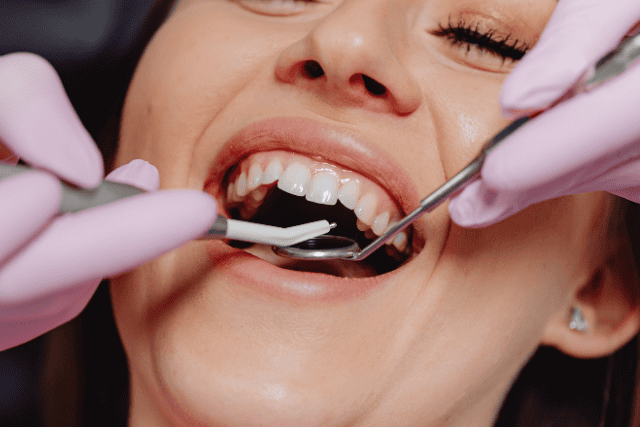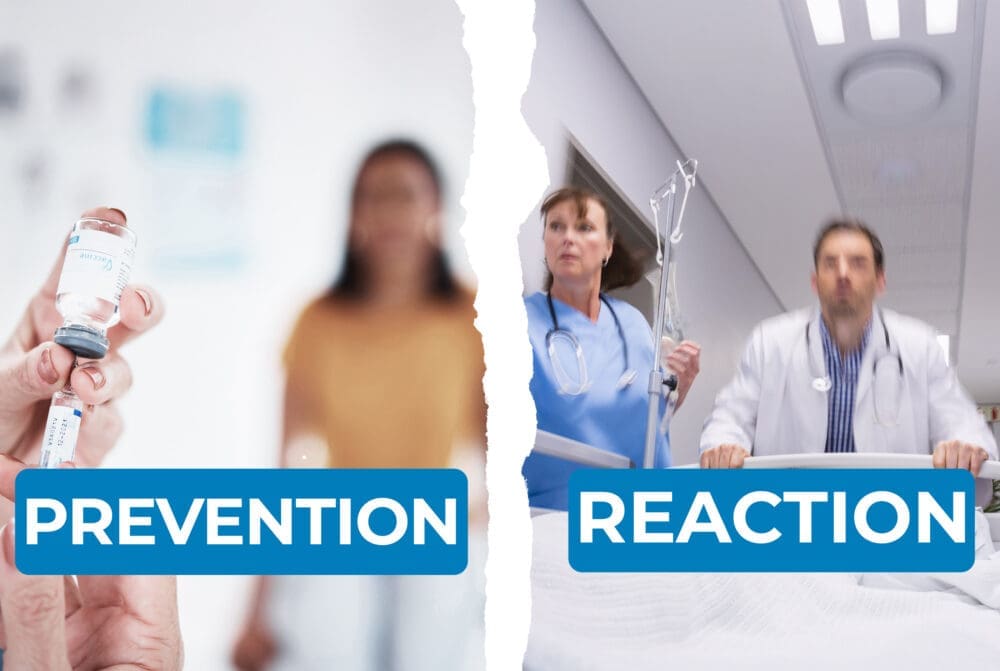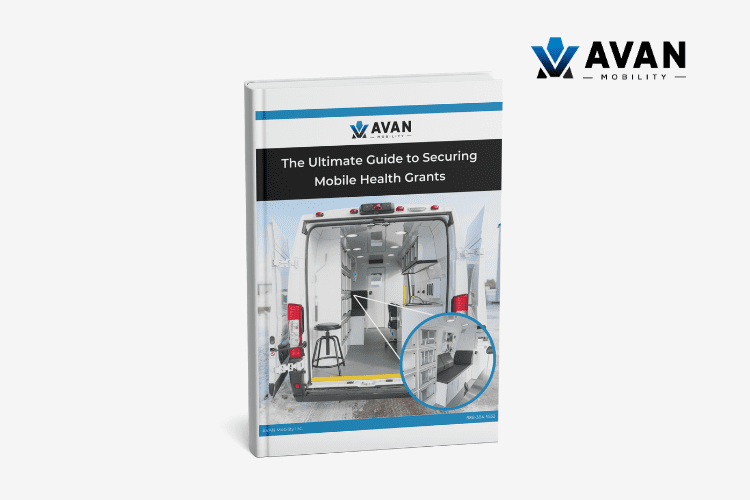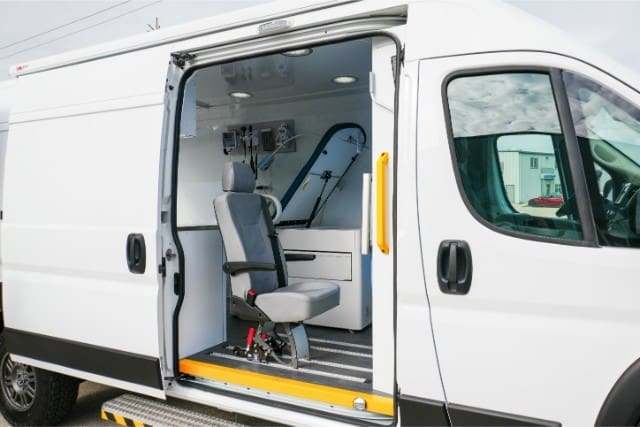The high rate of untreated cavities—nearly 15% of kids aged 1–17 in California between 2020 and 2021—shows a clear need for better access to dental care. Many families face challenges like:
- Cost
- Transportation
- Limited access in rural areas
If you’re in the dental field, you’ve probably seen this gap firsthand. It’s frustrating to know so many people are struggling to get care—and the longer the wait, the worse the problem gets. Cavities turn into root canals. Pain turns into ER visits. And families are left without options.
Now picture this. Your organization owns a mobile dental clinic in California—a fully equipped unit that brings care right to people’s doorsteps. You’re closing the gap and making dental care easier for everyone.
At AVAN Mobility, we’ve spent over 10 years helping organizations like yours remove barriers to healthcare. We design mobile dental units and five other types of medical vehicles that are flexible, dependable, and built to save lives. We know we’re not the only manufacturer out there, but we’re proud to help businesses bring care to those who need it in California and all over the U.S.
In this article, we’ll answer your question: Is it worth starting a mobile dental clinic in California? You’ll learn how a mobile dental unit can help close care gaps, expand your reach, and support your mission to make dental care more accessible.
Let’s get started!
What are the gaps in dental care in California?
Dental care can be hard to get for a lot of people in California.
As we mentioned, families with lower incomes often skip regular check-ups because they can’t afford them or live too far from a dentist’s office.
Here’s a closer look at the problem:
Not enough dentists in some areas
Rural areas are hit hardest: In places like San Joaquin County, there are only 2.2 dentists for every 5,000 people. That’s not enough to meet the need.
Long drives for care: People in small towns like Dunsmuir and Julian often have to travel far distances just to see a dentist, which isn’t always possible.
Insurance doesn’t always help
Few dentists accept Medi-Cal: About 79% of dentists in California don’t take Medi-Cal, the state’s low-income insurance.
Out-of-pocket costs add up: Without affordable options, it often forces many people to wait until small problems turn into big ones.
Language and culture barriers
Finding the right dentist can be tough: While 60% of low-income adults in California are Latino or Black, only 8% of dentists are.
Communication issues: If patients don’t speak the same language as their dentists, it can be difficult for them to communicate their concerns.
What is the result of these gaps? Bigger problems later on
When cavities go untreated, they don’t just disappear—they get worse.
Here’s what can happen if dental issues aren’t addressed early:
Tooth infections: Cavities can lead to abscesses, which are painful infections at the root of the tooth. If left untreated, the infection can spread to other parts of the body, causing serious health problems.
Tooth loss: Severe decay can damage teeth beyond repair, leading to tooth extractions. Missing teeth can make eating and speaking harder and affect a person’s confidence.
Gum disease: Cavities often lead to gingivitis (early-stage gum disease) or periodontitis (advanced gum disease). These conditions can cause gum recession, bone loss, and eventually tooth loss.
Chronic pain: Cavities can cause ongoing toothaches, making it hard to eat, sleep, or concentrate, especially for kids.
Jawbone damage: Infections from untreated cavities can spread to the jawbone, causing swelling and bone deterioration.
Serious health risks: Oral infections can enter the bloodstream and lead to conditions like sepsis or increase the risk of heart disease and stroke.
5 ways a mobile dental clinic in California bridges care gaps
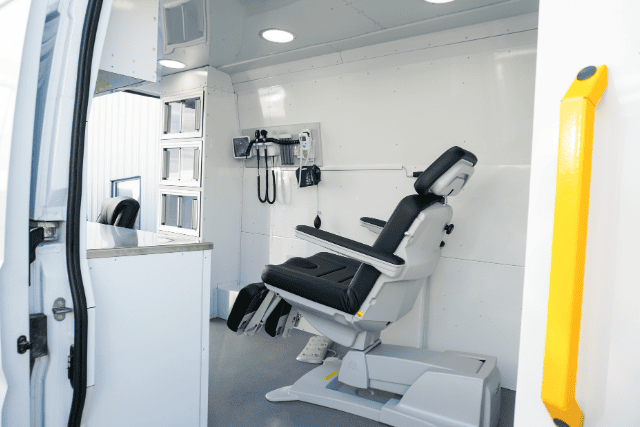
Starting a mobile dental clinic in California is a lot more than just fixing cavities—it’s about fixing access to care. For a lot of people, simply even getting to the dentist isn’t easy. Busy schedules, long drives, and high costs can make regular check-ups feel out of reach. That’s where California mobile dental services come in. Here’s how they can help:
1. Go where the need is
Bring the dentist to the patient: A mobile dental van can travel to schools, community centers, and rural areas where dental care is harder to find.
Help city residents, too: Even in bigger cities, traffic, and packed schedules make it hard to fit in a dental visit. A mobile dental unit makes it easier to meet people where they are.
2. Fit busy schedules
Flexible hours: Not everyone can make it to a 9-to-5 dental appointment. A California mobile dental clinic can run evenings and weekends to fit real-life schedules.
Group appointments: Businesses, schools, and shelters can host mobile dental services, so multiple people get care in one stop.
3. Stop problems before they grow
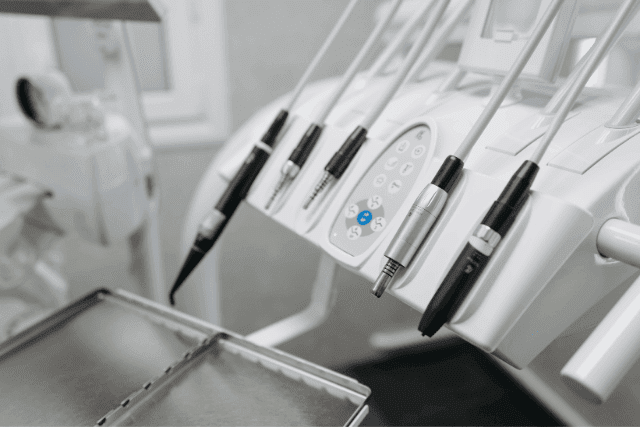
Early care saves teeth: Regular visits to a mobile dental clinic in California can catch cavities early so they don’t turn into bigger, more painful problems.
Teach healthy habits: Mobile dental clinics also give patients tips on preventive care, such as brushing and flossing at home.
4. Offer a cost-effective solution
Lower overhead costs: A mobile dental unit doesn’t require the same overhead as a permanent office. This can mean lower operating costs and more affordable services for patients.
Better return on investment: With a mobile dental clinic in California, you’re not tied to one location. You can reach more patients in more areas, which helps grow your practice while keeping costs under control.
Flexible payment options: Many mobile dental services can offer payment plans or accept insurance programs, making it easier for patients to afford care.
5. Reach more people and make a difference
Build trust in local communities: Showing up where people need care builds relationships and trust. A California mobile dental service can create partnerships with schools, retirement homes, and shelters.
Expand your impact: With a mobile dental unit, you’re not waiting for patients to come to you—you’re going to them. That means more smiles and healthier communities.
A mobile dental clinic in California removes the barriers that keep people from getting the oral healthcare they need. It’s a smart way to grow your practice while making a difference.
Is Starting a Mobile Dental Clinic in California the Right Move for You?
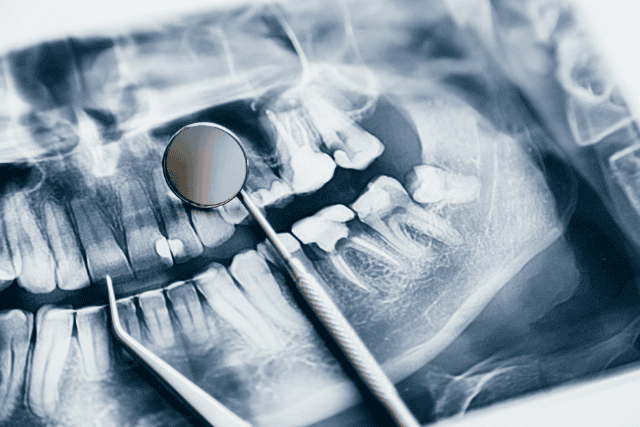
You came to this article looking for answers about whether starting a mobile dental clinic in California is worth it—and how it could help solve the dental care gaps affecting so many communities.
After reading, you’ve learned about the challenges California faces with dental care access, the risks of leaving those gaps unaddressed, and how California mobile dental services can help overcome the barriers to dental care.
At AVAN Mobility, our mobile dental units are built to make dental care accessible, flexible, and life-changing for the communities you serve. While we’re a manufacturer, we’re also your partner in creating solutions that treat patients and transform lives. If you’re ready to make a difference, click the button below to talk to a mobility expert today.
If you’re not ready to chat just yet, we’ve got more resources to help you learn about mobile clinics and how they can help your organization grow. Start by checking out our article on mobile dental clinics vs. fixed dental clinics. This comparison will give you a clearer idea about their differences and which option may be right for your organization.
